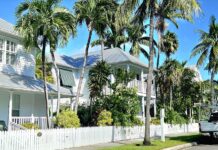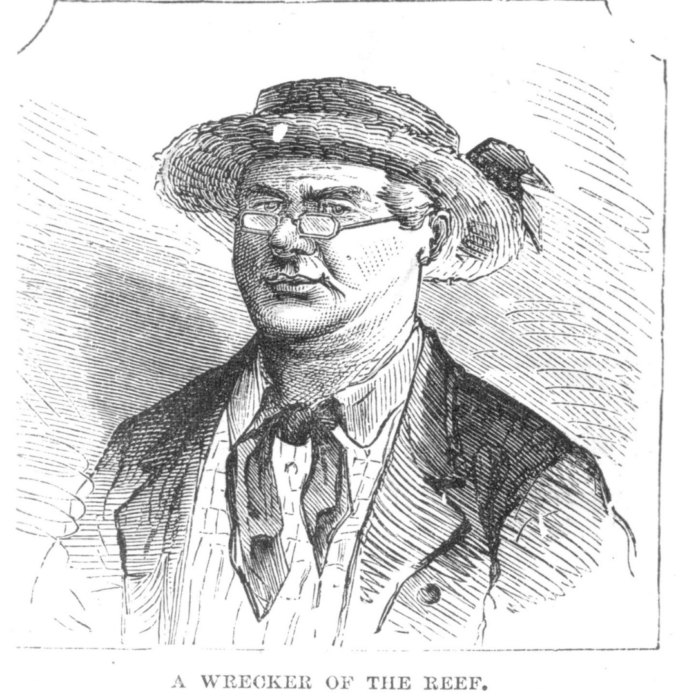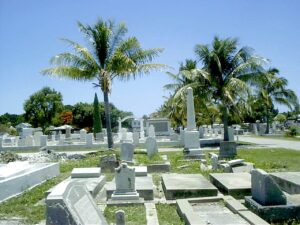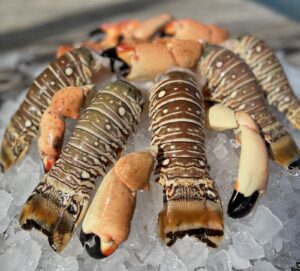Key West’s Audubon House was built after 1846’s Havana Hurricane ravaged Cuba, destroyed the Sand Key Lighthouse, and threw the double hurricane punch of high winds and tidal surge at Key West.
John Huling Geiger was responsible for the house’s construction. He was one of Key West’s early residents and served as a pilot for Commodore David Porter’s anti-piracy squadron after they arrived in 1823.
Geiger was also one of the most successful Florida wreckers. Eventually, he became one of Key West’s wealthiest residents, who built a home befitting his growing family’s standing in the community in the wake of the Havana Hurricane’s destructive forces. The house, located on the corner of Whitehead and Greene streets, was constructed with Dade County pine. The family occupied the home for more than a century.
While Geiger left a sizable footprint on Key West’s history, it was not limited to his success as a wrecker or the dimension of his home’s foundation. John James Audubon named Cordia sebestena, with its stunning orange flowers, the Geiger tree in honor of the wrecker. The tree has other varieties that produce white flowers and yellow flowers. Geiger is also the name of a small island south of Big Coppitt Key. During the Coast Survey conducted in 1861, A.D. Bache wrote about the island: “Geiger Key is 2 miles long and 1 mile wide. It was in good cultivation in 1855, and was inhabited by an industrious German, from whom it derived its name.”
Other sources indicate the island was named because of the presence of Geiger trees on the island. Today the island is home to the Geiger Key Fish Camp, one of the great off-the-beaten-path spots to stop for some good food and a nice cold drink while soaking in some beautiful waterfront views.
John Geiger was also featured in “Along the Florida Reef,” written by Dr. J.B. Holder. Holder accompanied an expedition to the Keys that traveled between Fort Myers on the west coast and Fort Dallas on the east coast in 1860-1861. Fort Dallas would later blossom into Miami. “Along the Florida Reef” documents Holder’s experiences and observations during the trip. Because of its length, Harper’s New Monthly Magazine published it in serialized form between the March and July 1871 editions.
In the April edition, Holder not only writes about Geiger but provides an image of his face, too. Holder’s story includes etchings of the sights and people he had seen during his adventure. In the etching showing what a typical wrecker looked like, one simply captioned “A Wrecker of the Reef” is John H. Geiger. In the text, Holder described Geiger as “a man of decided character and a sort of commodore among his compeers.”
The Geiger family house fell into disrepair in the 1950s but was purchased by the Wolfson family, wired for electricity, and restored to its previous glory. On March 18, 1960, the Wolfsons dedicated the house as a public museum named the Audubon House.
The connection to Audubon is tenuous. Stories suggest he stayed at the house for months during his time in Key West. That story had two primary problems. First, Audubon was only in the Keys for five weeks. Second, Geiger built the house nearly two decades after Audubon’s stay. Stories also suggest Audubon was once in Geiger’s garden when he saw the brilliant flowers of the Geiger tree, and that is why Audubon gave the tree its name.
While Geiger built the Audubon House circa 1849, Audubon arrived in the Florida Keys aboard the U.S. Revenue cutter Marion in April 1832. For that handful of weeks when he was in the Keys, he visited Indian Key, Key West and the Dry Tortugas. Audubon was not thrilled with Florida as a whole, but he certainly had kind things to say about the Keys. Upon arriving at the harbor of Indian Key, he wrote that his “heart swelled with uncontrollable delight.” In a letter to his wife, Audubon wrote that the island’s “air was darkened by whistling wings.”
At Indian Key, Audubon and his team stayed at the boarding house of John Egan. Egan had only just built the boarding house at the edge of the small island – along the edge and just a little bit over the clear Atlantic waters. Egan was also more than a host and served Audubon as a pilot and guide during his short stay on the island.
Audubon wrote some interesting things about Egan in both his role as host at the boarding house and as his pilot and guide while he was at Indian Key. Those stories, however, will have to wait for another day.






















